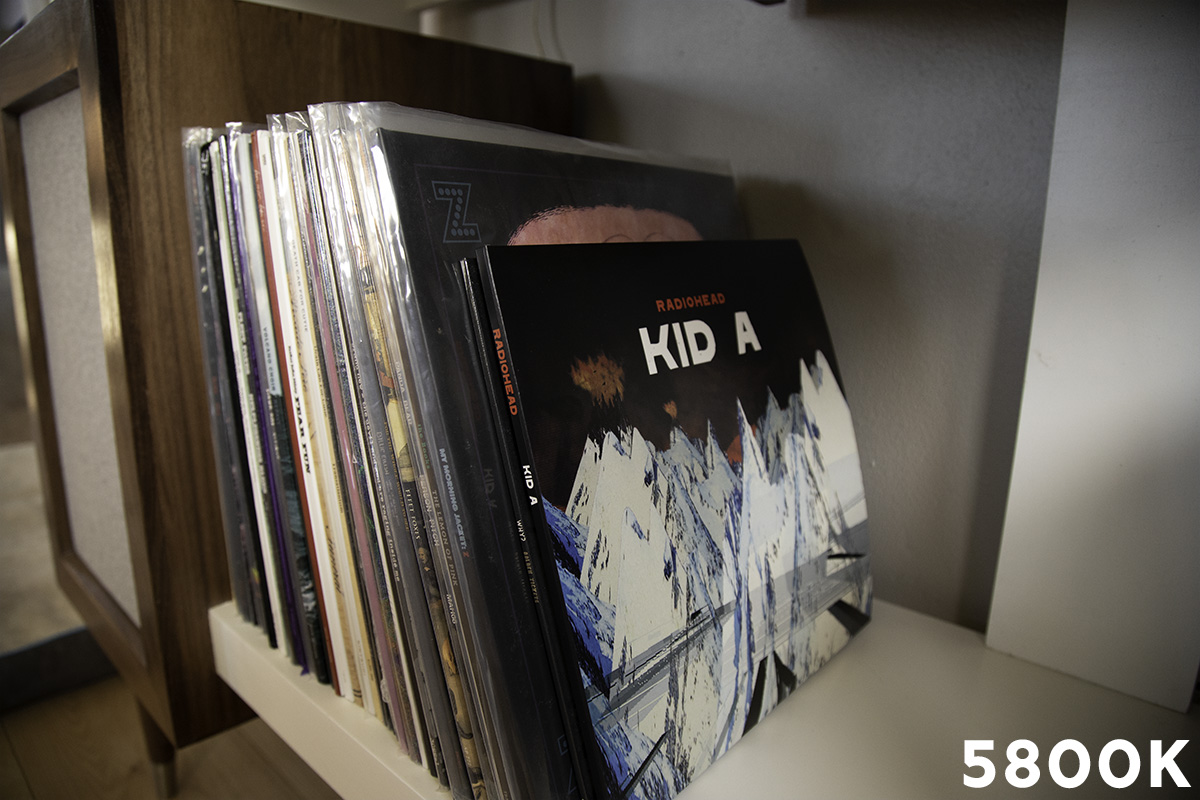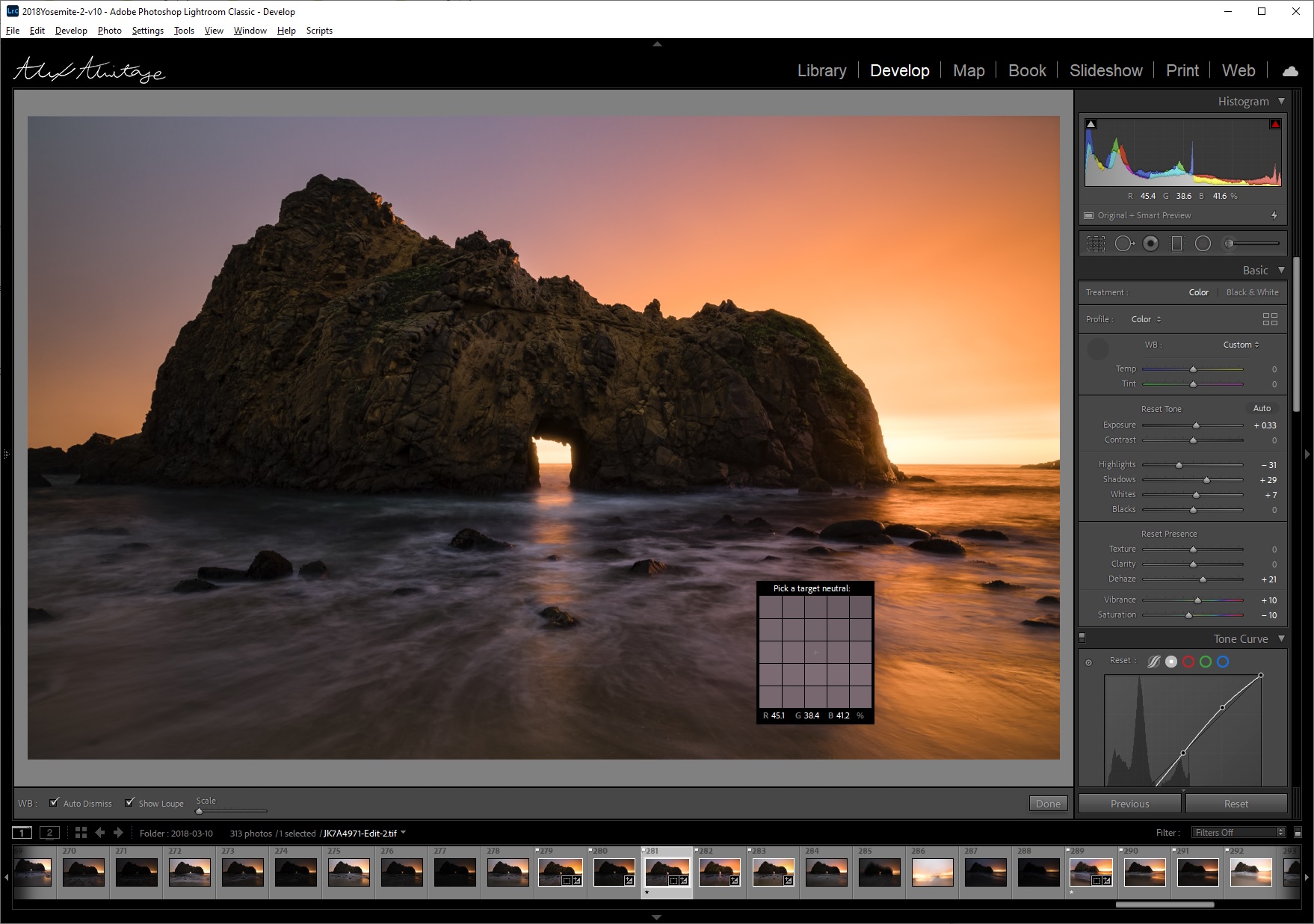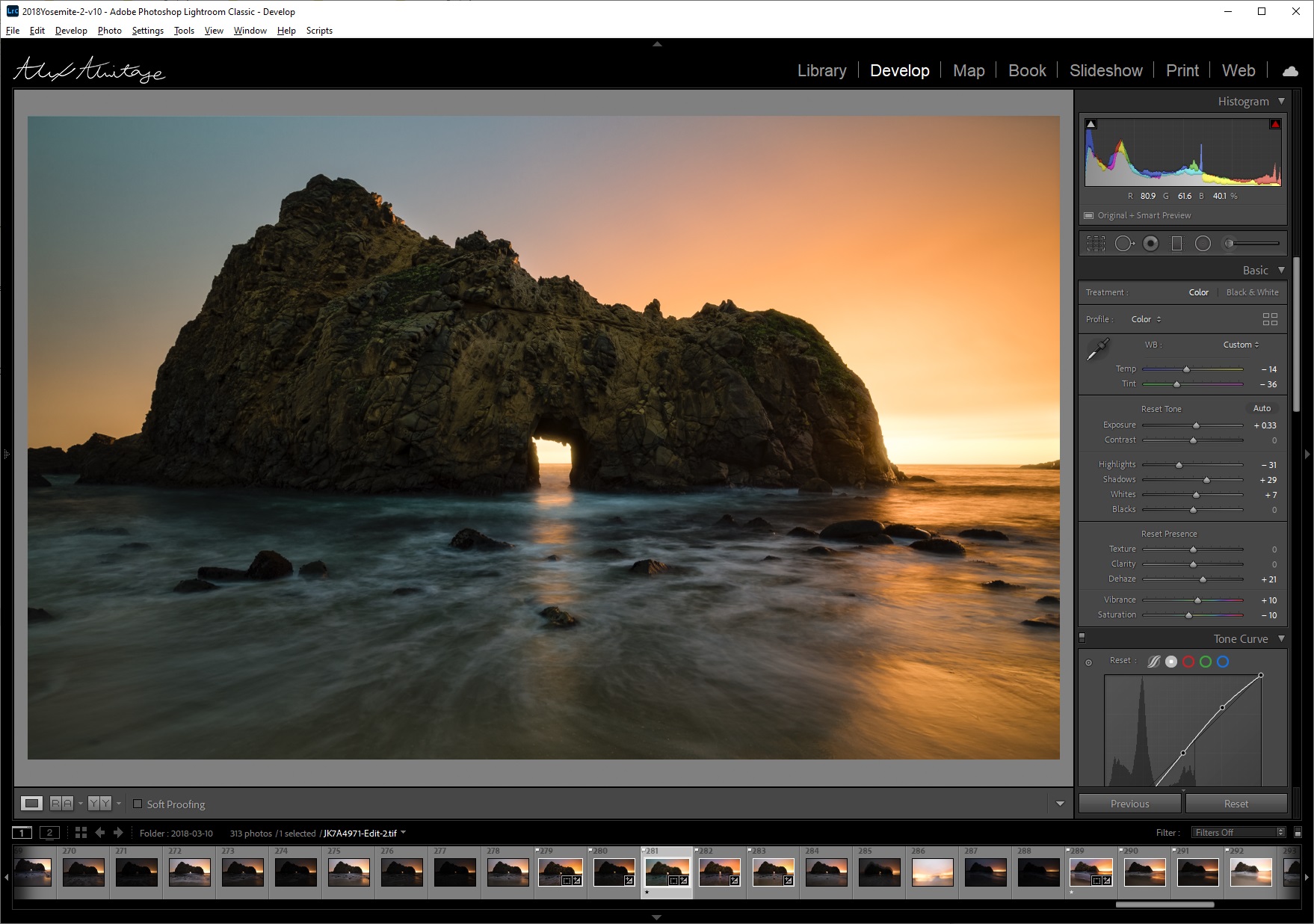White balance is very important in many areas of photography, but what about landscapes? In this week's article and video, I dive into why you shouldn't worry about white balance out in the field, but I also go over best practices in deciding how to edit your images.
I've had multiple people ask me, "what is the right white balance" or "how do I know what my white balance should be?" The truth is I don't worry about white balance at all when I'm in the field, and it's really a decision I make when I sit down to edit. In nearly every other field of photography, white balance is important to represent accurate skin tones or colors in a product. That isn't the case in landscape photography, and personally, it's more of a creative decision rather than a scientific one.
In this article, I'll go over what white balance is, the best ways to utilize it in the field, and most importantly what to do once you go to edit a photo. Every opinion and point I make throughout this article is with the assumption you are shooting in raw, allowing you to manipulate white balance without loss of quality after you've taken your photo, and if you're shooting landscapes, you should absolutely be shooting in raw. More on that later.
What Is White Balance?
Our eyes are a lot more advanced than our cameras, and sometimes, they can even deceive us when it comes to balancing light. Just like how our eyes adjust to bright or dark scenes, they also adjust to what is white or black. Using the image above, open it up and stare at it for 20-30 seconds without looking away. At first, it should appear somewhat blue, but as your eyes adjust, it should start to appear white or even gray. Once that period is over, look at something you know to be white such as a wall or the background to this article. When you do that, your eyes will overcompensate and what you thought was white will appear almost red or orange until they adjust again. Knowing that your eyes change based on the light around you, how do we determine accurate levels of white or gray for an image in photography?

Just like we use a histogram to mathematically determine the light values in an image, we use a scale of Kelvin temperatures to tell our cameras what should be considered white or neutral. Above, you can see values going from left to right and go from orange or "warm" to blue or "cold" light. This scale is what our cameras use to determine what should be white in an image based on the type of light that is present when you snap a photo. 
I don't want to get too deep into the science or wavelength explanations of what all this means. For photographers, all you really need to know is that your camera uses this scale to determine what should be white/neutral in your image because light sources emit different Kelvin values. This is why many cameras have presets such as the ones in the graphic above that include settings like cloudy, daylight, or tungsten. These are to help guide you in setting the correct white balance when taking photos or video based on the lighting conditions you are shooting in. Well, as the title says, I'm here to explain that these presets or even setting Kelvin values are mostly irrelevant when it comes to shooting landscape photography.
Raw Photography
Let's just get this out of the way first even though I mentioned it in the intro. When you are shooting in raw, you can change the white balance to whatever you want once you begin to edit the photo. This is because when we shoot in raw, the image is uncompressed mathematical data, think 1s and 0s, that represents an image and is then converted in something like Lightroom or Capture One. In this conversion, we can determine or instruct our software program being used to convert the raw image with the correct white balance.
To prove this point above is an image captured at 3,100 K with a tint of +5. Next to it is an image captured at 5,800 K with a tint of +23.
Now, if we give the first image the same values as the second image, they should look identical in terms of what appears white, and from my eyes, they have the same colors, which is to be expected.
When you are photographing people, getting skin tones accurate tends to be a crucial part of a photographer's process. The same can be said for product or wedding photography. That's where something like a color checker comes in, but I'm certainly not carrying around one of those when I go to take my landscape shots. The truth is I don't even really think about white balance out in the field.
White Balance Doesn't Matter for Landscapes
So, knowing we can change the white balance to whatever we want regardless of our settings in the field, we still don't have the answer to our opening question: "how do you choose the correct white balance?" The hard truth is there is no correct answer. However, there are three questions you can ask yourself to figure out exactly what you'd do when choosing white balance in a landscape.
- What were the lighting conditions when you took the shot?
- Which part of your image is the most important?
- Creatively, what feeling do you want out of your image?
Alright, let's break each of these down using some examples. Above, you'll see an image I took during sunset that has some absolutely crazy colors; to this day, I think it's the most intense sunset I have witnessed in terms of the color gradient. So, what's the correct white balance here? The answer is that nothing in this image should look white or neutral, which somewhat defeats the entire purpose of the white balance, doesn't it? That's where you have to factor in what the conditions were for your original shot. Knowing that this was taken at sunset with incredibly intense red and orange light, nearly everything in this photo will reflect or absorb that light, thus causing the entire image to be very warm.
What happens if we try to tell Lightroom what the correct color balance is by using the dropper tool and selecting a neutral area in the image? The left image is where I selected a neutral color area of water and instructed Lightroom to adjust based on that, the right image is the result. Because the light at the time was so naturally red, it tries to correct it by tinting the whole image green and cooling it down some, but that simply wasn't what it looked like in real life, and personally, it makes the image look worse.
So, you might be asking yourself, why not just try to match the color in the field so you don't have to worry about remembering what it looked like? When light as intense as this is happening, it can be quite fleeting, and there are numerous other more important things to worry about at the moment. Considering white balance is completely adjustable after the fact, I'd much rather focus on my composition and settings I cannot change later on rather than trying to use the screen on the back of my camera to match the colors in real life. Not to mention the auto white balance feature of most modern cameras is quite good, and it should be very obvious if it got the shot wrong once you get home.
The next question involves those scenes where there are both cold and warm areas of light. How do you choose what's right? The above image is a great example of this: the top half of the image is bathed in sunrise light, whereas the valley below is only receiving reflected light and is obviously in shadow. To me, the important part of the image is the waterfall area where the sunrise light is radiating. Thus, I'm going to balance my image from there. Just remember, though, the sunrise light should appear warm or orange. The snow on the cliff faces shouldn't be perfectly white. The result gives a warm light on the waterfall and a very cold foreground. You can use more tools like the graduated neutral density filter to help balance your images to your liking as well. I really enjoy this contrast of warm and cold, and it's a creative way to use the white balance in your images.
Speaking of creative ways, if it's not obvious already, it's really up to you, the artist, on what you want your image to look and feel like. In the above example, I shift my entire white balance to both sides, cold and warm. Both images work, and both present a different feeling to the viewer. The cooler image feels colder with a bit more mood, while the warmer image feels more vibrant and inviting. Neither of these images looks pushed or over-tuned and would be completely reasonable images to include within your portfolio, even though the white balance was never "perfect."
Conclusion
When it comes to landscape photography, white balance isn't about perfection or science. It really comes down to the creativity and desires you have as an artist in choosing what you want your image to look like. Sometimes, a good starting point is to figure out what best represents how it felt in real life, but many times, you might feel the need to push an image exactly where you want it to go, and that's perfectly okay.
To sum it up, whether you're a brand new photographer or a seasoned veteran, shoot your images in raw and focus on much more important things out there at the moment and use white balance to express yourself as an artist when you sit down to edit.
I hope this was insightful and helpful to all levels of those who read it. I'd love to hear what you think down below. Thanks as always for watching and reading!
















Interesting... I usually just leave it at Daylight and keep shooting. I had never touched the white balance except in rare studio photos
Really - if you shoot RAW, then white balance doesn't matter for any type of photography.
Since you're going to edit RAW files anyway, then it's just a simple adjustment on the slider to get what you want rather than fiddling with presets or custom white balance on the camera.
Yes. But, if you have the correct white balance to begin with you might not have to touch that slider at all. I usually leave my WB on 'auto', but more than once I have done a lot of photos indoors at night using available light, so I set my WB to 'tungsten', and then noticed when shooting the next day that my pics taken in daylight seemed awfully blue. Oops. Oh well, the slider can deal with that.
OTOH, WRT the premise of this article, I say yes, the WB does matter. And always shoot raw.
In the video he said 9 words which are of great importance....."What did it look like when you were there?" And then followed it up later with...."What do you want it to look like?" In this digital age we can now use any photo we've taken and change it any way we like to create whatever 'feel' or 'look' we want to. It leaves to question then, what DID the scene actually look like at that moment. I can't say that I am a purist because when I use filters for films, I essentially am changing the actual hues and/or colors of what I actually saw. I, as I believe most photographers, alter or change what they see to create a feel or mood to that which they are shooting. I just don't like it when it is taken too far. Or...do I? I do love many surreal photos I have seen. Oh well. I guess I'm talking out of my anal orifice. Just keep on shooting like you're doing everyone. The photos I see here are fantastic. Oh...for white balance, I shoot film so...... On digital I shoot in RAW and most times auto white balance works just fine.
"what DID the scene actually looks like at that moment" or, let me expand the argument with: How did you see how the scene will look in the result? I am not a landscape photographer. Nevertheless I do photograph landscapes. Most of the time it's the light that impresses me, and basically I want the result to be close. As we all know, this is not an easy task. On the other hand, when I see (well done) landscape photos that look great, but I doubt that the scene actually looked like that, I lose a little interest in the photo in question.
That said, the actual white balance of the camera base is not important, since you can evaluate it with the RAW data. If the light is constant and does not change too fast, a gray and/or gray color card might be a good idea to calibrate to a true white balance (and better real colours).
Yes, I want the results to be close as well. As for...."what DID the scene actually look like at that moment?" I wasn't speaking about any particular scene. Just as if someone was looking at a scenery before they photographed it. When you said...."On the other hand, when I see (well done) landscape photos that look great, but I doubt that the scene actually looked like that, I lose a little interest in the photo in question." I feel the same way and looking at all these extremely sharp, well-defined and abundantly colorful landscape photos, I know they've been edited a lot, but they're still nice to look at. I just don't feel the same way as if someone had photographed them more closely to how they actually were. Then again, the image should have a little more punch to it to give it that WOW factor. Just don't like when it's way too obvious.
And yes, white balance doesn't really matter. That said, if it doesn't matter then it's perfectly fine for anyone to use auto white balance or whatever. I did all my professional work on film/slide so RAW did not play any part in any of the edits I had to make.
When you said....."let me expand the argument....." Are you trying to argue with someone?
I did not want to argue with you. I agree with all what you said in both messages. I only wanted to add something to your statement. 'Expand' was probably the wrong word. Make it 'add' instead. Sorry, English is not my mother tongue.
Oh...it's ok. But expand was not the wrong word. Argue was. Maybe say...I want to expand on the discussion. That is much more correct. You have a nice Thanksgiving and be safe out there.
Long article..if you shoot RAW you can put it where you want? Start with awb and adjust in process. You have no right or reason to shoot jpeg for landscapes (or anything else really!).